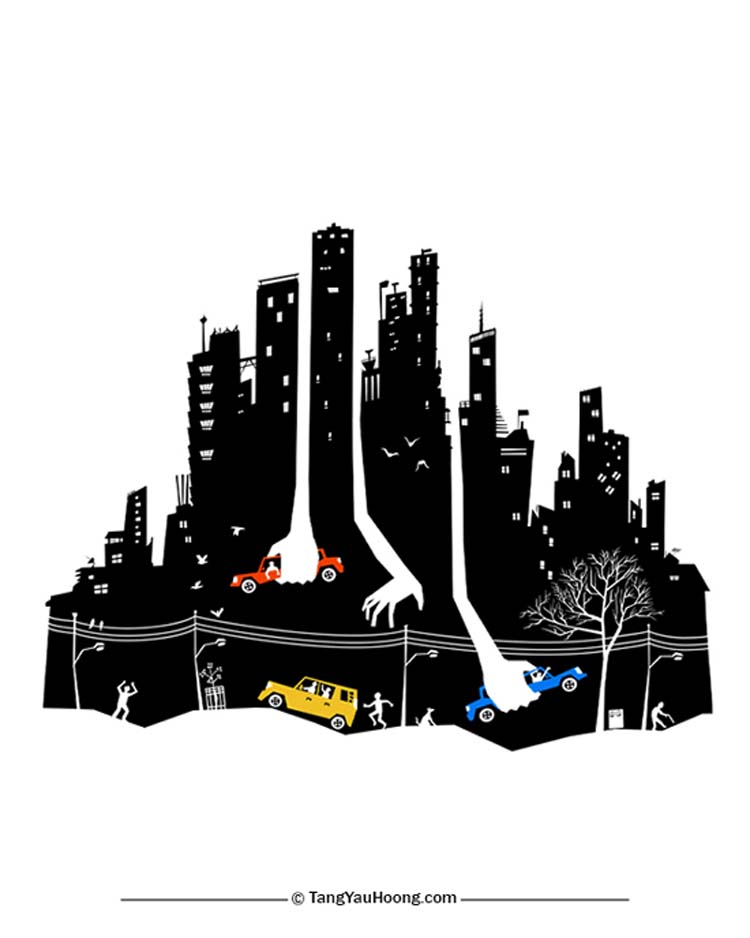
Exorbitant amounts of white space can make objects feel small or distant and set apart from the rest of the design. Too much space does not present as many concerns as too little space but can be equally difficult as a design technique. Think of the space between lines of type, for example, without enough letters can touch and become unreadable.

Even if the effect you are going for is one of chaos, space matters. Too little space makes a design feel crammed, busy, cluttered and difficult to read. When perfected, white space goes almost unnoticed, but when executed poorly it jumps off the screen (or page). It is included in the style guide or style sheet for every design outline. White space is the one design element that is common among every project, printed piece and website. Most designers abide by the “keep blank spaces around content” rule because it makes everything that much more readable. These small spaces are immensely important even though you may not pay that much attention to them. Negative spaces are everywhere, from the halos around objects to the gaps between lines of text. The right balance of space and elements is what really brings a complete design together and makes it beautiful. And spatial relationships define what elements go together, and what elements do not. The right amount of space separates objects from each other. Space is the thread that holds your design together. Try Startup App Try Slides App Other Products

With Startup App and Slides App you can build unlimited websites using the online website editor which includes ready-made designed and coded elements, templates and themes. It can be a color, a pattern or even a background. So make sure your audience always understands the jargon you are using.Īnd remember, negative space does not have to be white. Though the terms are interchangeable some web designers especially will confuse white space with negative space that is colored white. Simply, anything that is not drawing attention is considered part of the negative space – this can be part of an image itself (think the sky in the background of a portrait), a patterned background on a website or even just a block of color around text. The term negative space originated with photographers, who refer to positive (the subject of a photo) and negative (the background) in images.

Many other designers just call this negative space. Print designers – those working with books, newspapers and magazines especially – most commonly use the term “white space” because any unused part of the page is often white, rather than another color. Both terms refer to any unused, or open space in the design. The jargon differences come from print publishing versus other types of design. White and negative space are the very same thing (and the terms will be used interchangeably here). With Postcards you can create and edit email templates online without any coding skills! Includes more than 100 components to help you create custom emails templates faster than ever before.


 0 kommentar(er)
0 kommentar(er)
